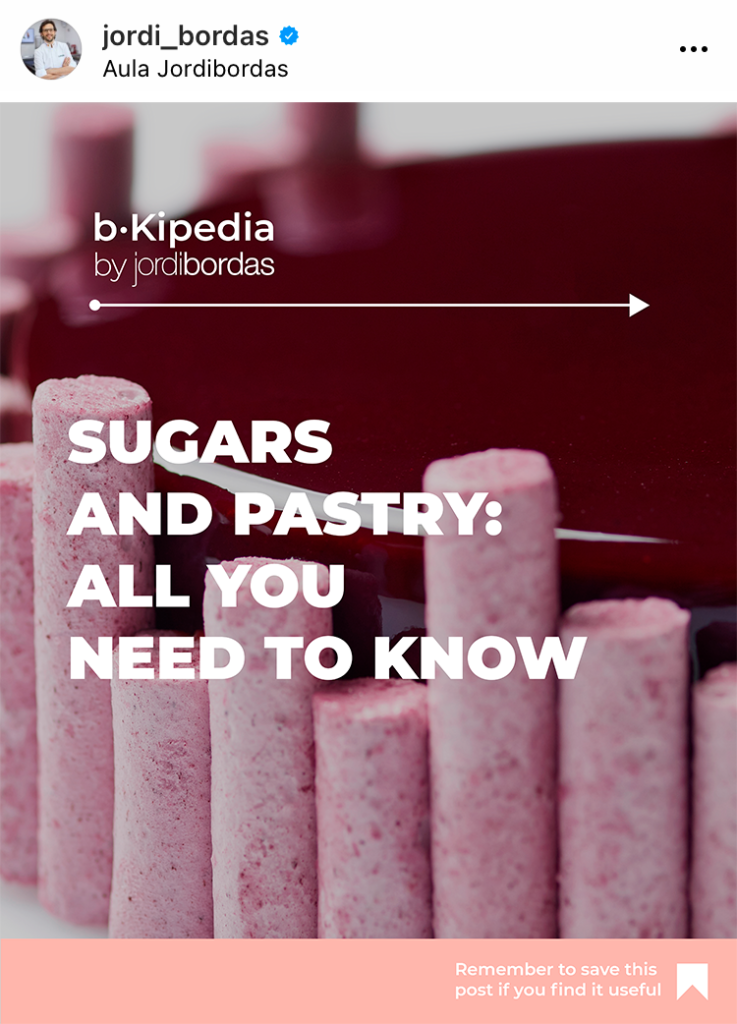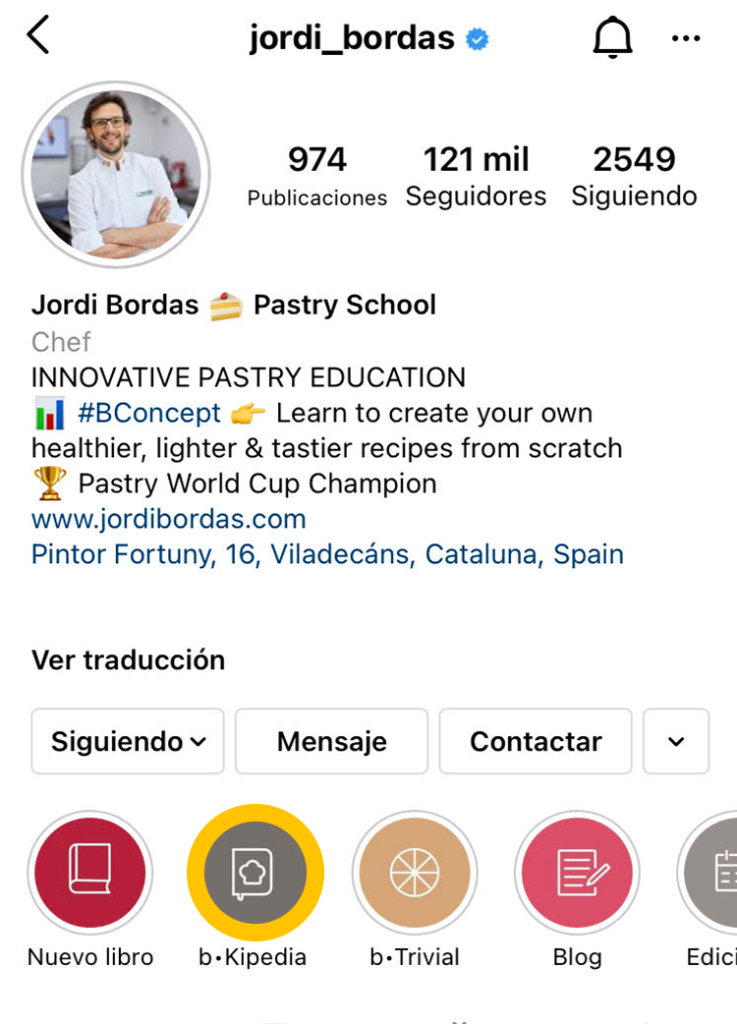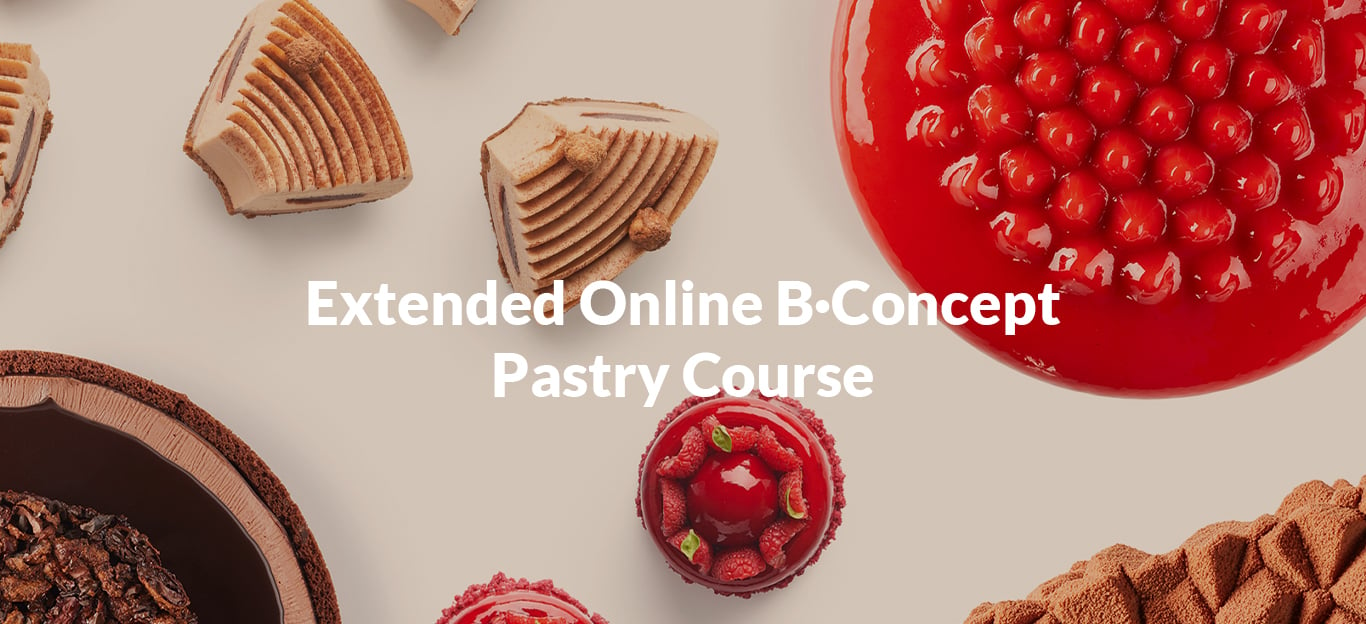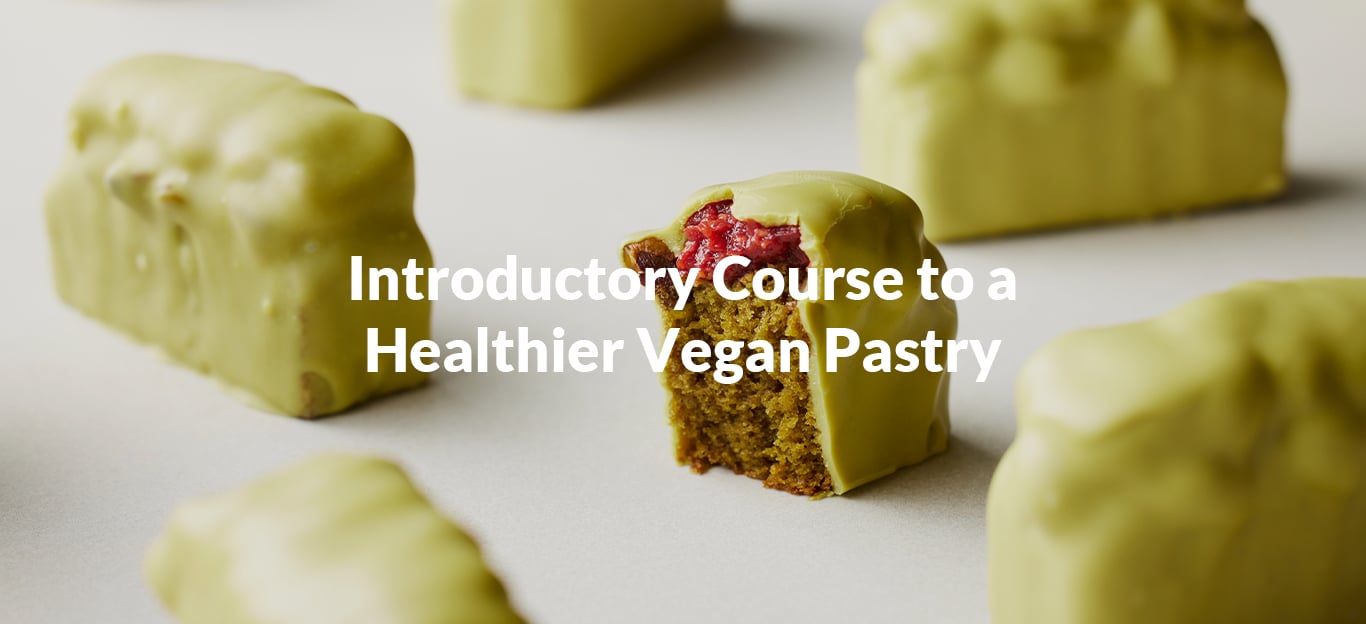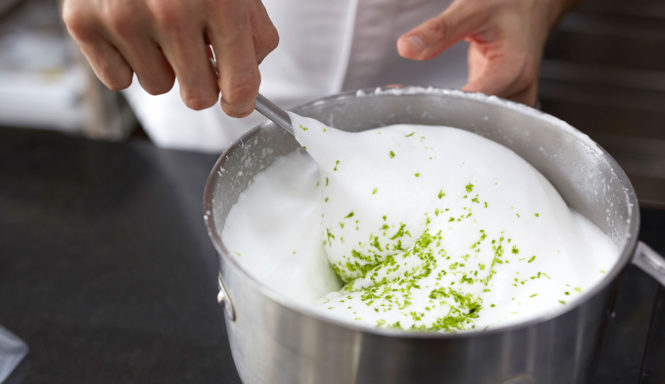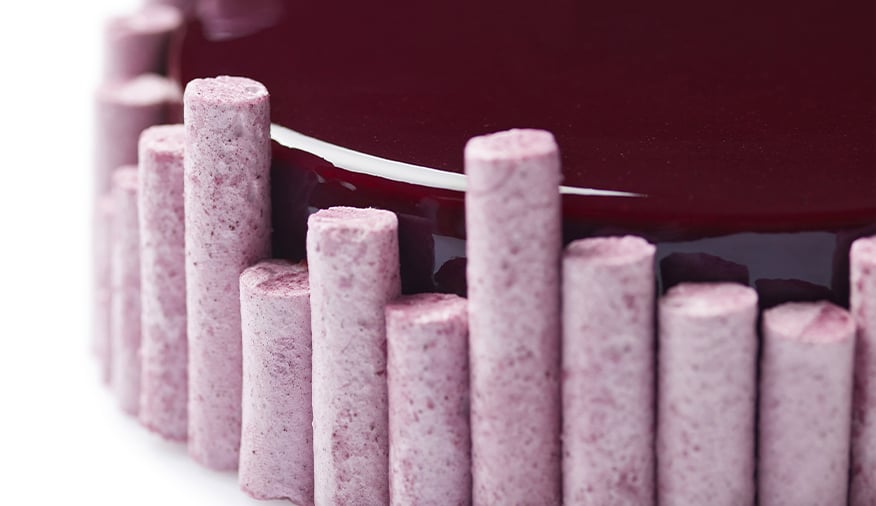
Sugar in pastry: it’s not all about the sweetness
Sweet as sugar
When we hear the word “sugar,” we tend to immediately think “sweetness”. The truth is, while you’re enjoying that delightfully sweet little morsel of sponge cake, those sugars are working hard to bring an array of other properties to our preparations.
Let’s get down to business. What are sugars, really? Sugars are the simplest form of carbohydrate, and our body relies on them as a source of energy. They come in all shapes and sizes, from muscovado sugar, to refined cane sugar, to honey and maple syrup. As we explain in great detail in our Extended Online B·Concept Pastry Course, these different types of sugar all provide us with varying levels of sweetness (called sweetness points) and can greatly affect our perception of flavor. Not only that, but some sugars even provide us with more or less stability in a recipe, and can mean the difference between a successful recipe and one that has us scratching our heads wondering what went wrong.
The answer is simple. While you thought you were improving your recipe by switching out common white sugar for coconut sugar, or a sweetener such as stevia or saccharine; you might not have realized that you completely changed the balance of your recipe. Let’s break it down.
WHERE THERE’S SUGAR, THERE’S STRUCTURE
Sugars can help us to build and maintain structures in many preparations. Take a meringue for example; when we whip up egg whites with white sugar, what we’re doing is stabilizing the protein in the egg whites, leaving us with those fluffy white peaks we’re so fond of. If you were to replace this white sugar with coconut sugar, without adding albumin, you’d be left with something more like meringue slime. This is because coconut sugar hinders the proteins in the egg whites, preventing them from creating a stable structure. This means we must always take the physicochemical properties of each sugar into account when substituting one type for another.
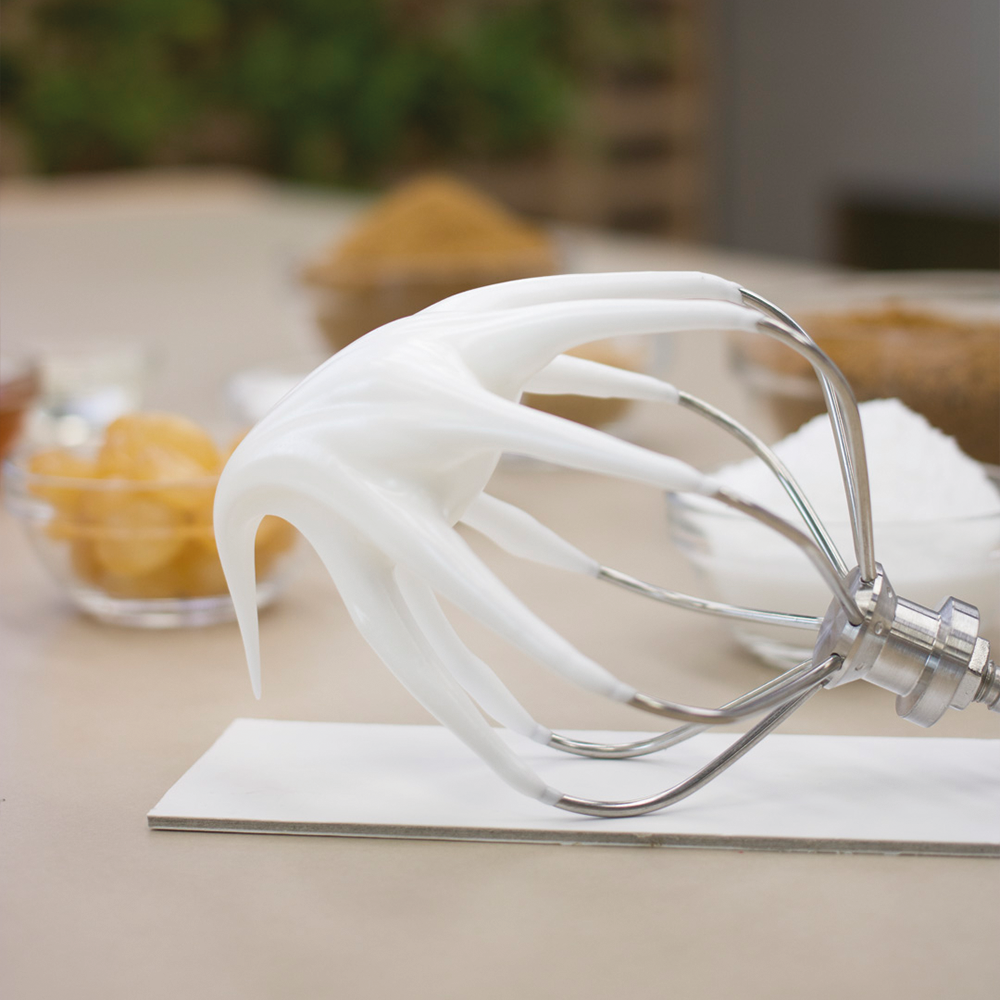
¿Cuanto más, mejor?
Other substitutions can lead to other structure related issues like syneresis, which we discuss in our webinar "Why my cake leaks water during the freeze/thaw cycle? Let’s talk about syneresis". As you may already know, dry extract is super important when it comes to maintaining a stable structure in those preparations that undergo the freeze and thaw process. This dry extract allows us to gain better control of the free water there may be in our recipes. If, for example, we were to replace common sugar with stevia in a recipe, we would be extremely short on dry extract, since stevia is 200 to 300 times sweeter than common sugar and we would need much, much less of it. That’s not to say that excessive amounts of sugar are the way to go; after all, the B·Concept method is all about making our pastry elaborations as healthy as possible, so we’ll always try to reduce the amount of sugar wherever we can. But if your aim is to make a healthier recipe by reducing the amount of sugar used, while still maintaining the same level of sweetness, you must also consider how this will affect the dry extract in your recipe.

COLOR, TEXTURE, TASTE: SUGAR’S GOT IT ALL
Sugars are so multifunctional that they can even prevent the overdevelopment of the gluten network in some preparations; meaning sugar is responsible for that moist, airy texture in your favourite sponge cake. Without it, that very same sponge cake would likely be very dry and bread-like in texture.
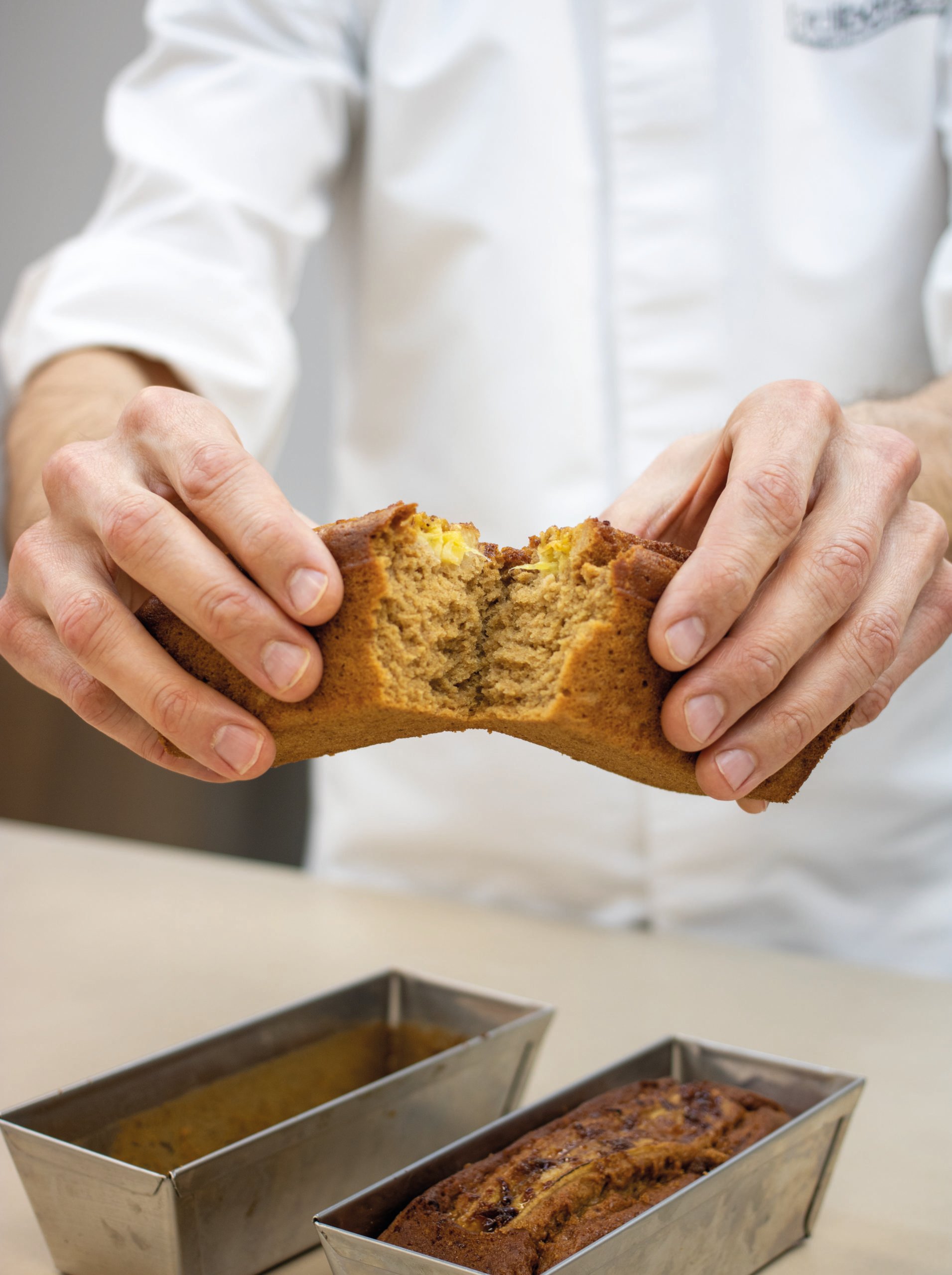
And what about that lovely golden-brown color? Yep, you guessed it—sugar! This is thanks to sugar’s ability to brown our preparations through browning reactions like the Maillard reaction and caramelization, which give a chocolate chip cookie its characteristic crisp, golden-brown finish. In fact, this crystallization of the sugars within our chocolate chip cookie not only affects its appearance, but also the texture as well as its shelf-life. A cookie made with little to no sugar won’t expand in the oven as much as a cookie with 20 % sugar would, since sugar allows our doughs and mixtures to spread out (or rise, if it’s creamed with butter) as it melts during the baking process. Likewise, a cookie with 20 % sugar is much more likely to still be moist the next day than a cookie with no sugar, which is more likely to go stale, since it doesn’t have this sugar to help trap the moisture inside.
THE MULTITASKER OF THE PASTRY WORLD
So, sugar has some pretty amazing abilities aside from just giving our recipes a sweeter touch. Of course, the sweetening points of each sugar are also incredibly important when it comes to formulating recipes and substituting one for another—but next time you’re thinking of making a quick switch in a recipe, take a moment to consider everything those sugars are getting up to behind the scenes.
DO YOU WANT TO KNOW MORE ABOUT SUGARS IN PASTRY?
We’ve left you more information on sugars and the different alternatives available to us on the market in the Instagram post pictured below (in English) and in the B·Kipedia section in our highlights (in Spanish).
Also, remember that in our Extended Online B·Concept Pastry Course, we dedicate a whole lesson to talking about sugars in the Pastry Molecules module.
